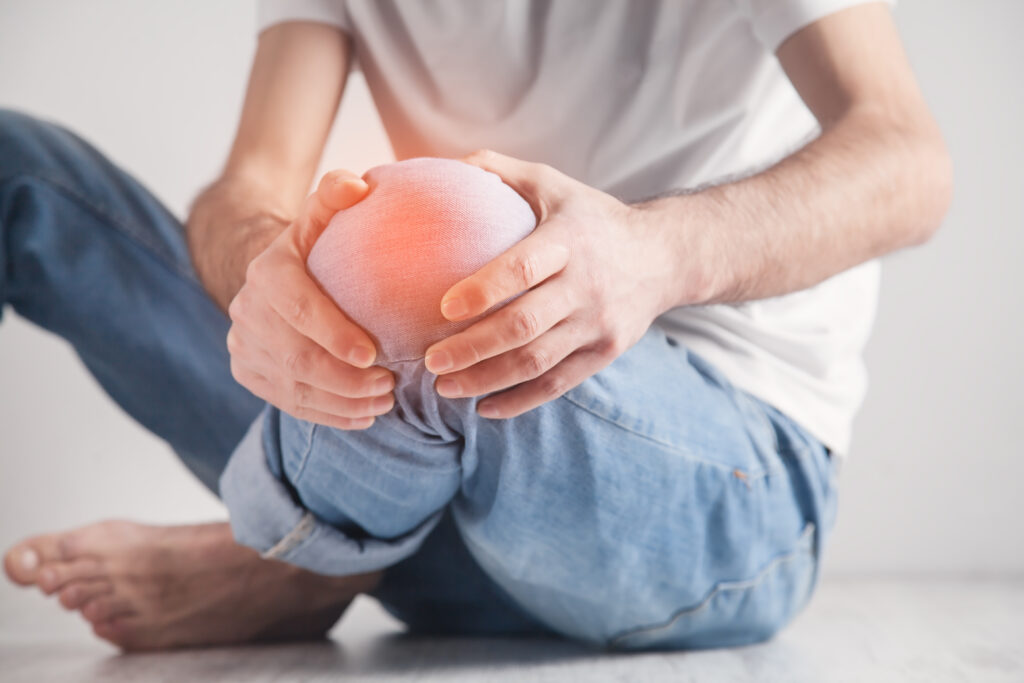If you're struggling with back pain in Calhoun, you might be surprised at how simple adjustments can lead to significant relief. Incorporating targeted exercises, maintaining proper posture, and exploring alternative therapies can enhance your quality of life. You'll discover that even small lifestyle changes can make a big difference in your comfort and mobility. But what specific techniques should you consider, and how can they fit into your daily routine? Let's explore the effective strategies that can help you regain control over your back health.
Understanding Back Pain Causes
Back pain can stem from a variety of causes, often resulting from a combination of factors. You might experience discomfort due to poor posture, which can place undue stress on your spine and surrounding muscles. If you spend long hours sitting at a desk or slouching on the couch, your back pays the price.
Furthermore, sedentary lifestyles contribute to weak core muscles, making it harder for your body to support your spine properly. Injuries such as strains or sprains can also trigger back pain. Whether you lifted something too heavy, twisted awkwardly, or engaged in sports without proper warm-up, you might find yourself dealing with acute pain.
Additionally, chronic conditions like arthritis or herniated discs can lead to ongoing discomfort. These issues may develop gradually, making it essential to pay attention to any recurring pain. Age is another factor; as you get older, your spinal discs naturally degenerate, which can result in stiffness and pain.
Obesity can exacerbate back problems, as excess weight places extra strain on your spine. Stress and emotional strain can also manifest physically, leading you to tense up and contribute to back pain.
In understanding these causes, you're better equipped to address the pain. Identifying factors in your life can empower you to make necessary changes, whether it's adjusting your workspace, incorporating physical activity, or seeking medical advice.
Taking action can help you regain control over your discomfort and improve your overall well-being.
Effective Stretching Techniques
Stretching plays an essential role in easing back pain and maintaining flexibility.
By targeting key muscle groups, you can effectively alleviate tension and improve your overall mobility.
Incorporating daily stretching routines into your life can make a significant difference in how you feel.
Importance of Stretching
Many people underestimate the power of effective stretching techniques when it comes to alleviating back pain. Stretching isn't just about flexibility; it plays an essential role in maintaining a healthy back and preventing discomfort.
When you stretch regularly, you help improve blood circulation and reduce muscle tension, which can greatly ease pain. Incorporating stretching into your daily routine can enhance your overall mobility, making everyday activities easier.
It's also important for maintaining proper posture, which is crucial for back health. Poor posture can lead to unnecessary strain on your back muscles, exacerbating any existing pain.
When you take the time to stretch, you're not only addressing current discomfort but also investing in long-term health. You'll find that a few simple stretches can make a big difference in how you feel throughout the day.
Targeting Key Muscle Groups
To effectively relieve back pain, it's important to focus on key muscle groups that support your spine. Targeting these muscles can help alleviate tension and improve your overall mobility.
Start with your hamstrings, as tightness in this area can pull on your pelvis and exacerbate back pain. A simple stretch involves sitting on the floor with your legs extended. Reach for your toes while keeping your back straight.
Next, pay attention to your hip flexors. They're essential for maintaining proper posture. To stretch them, kneel on one knee with the opposite foot in front. Push your hips forward gently, feeling the stretch in the front of your hip.
Don't forget about your glutes; tight gluteal muscles can contribute to lower back pain. Try a seated figure-four stretch by crossing one ankle over the opposite knee and gently pressing down on the raised knee.
Finally, engage your core muscles. Strengthening these can help support your spine and reduce strain. Focus on these key muscle groups regularly, and you'll notice a significant improvement in your back pain relief efforts.
Daily Stretching Routines
Incorporating daily stretching routines into your schedule can greatly enhance back pain relief. By committing just a few minutes each day, you can improve flexibility, reduce muscle tension, and promote better posture.
Start with simple stretches that target the lower back, hamstrings, and hip flexors. One effective stretch is the child's pose. Kneel on the floor, sit back on your heels, and extend your arms forward, lowering your torso toward the ground. Hold this position for 20-30 seconds, breathing deeply.
Another great option is the cat-cow stretch. Begin on all fours, alternate between arching your back up toward the ceiling and dipping it down while lifting your head. Repeat this for about a minute.
Incorporate the seated forward bend to stretch your hamstrings—sit with your legs extended and reach for your toes, holding for 20-30 seconds.
Finally, don't forget about the spinal twist: while seated, cross one leg over the other and gently twist your torso toward the bent knee.
Strengthening Exercises for Relief
To relieve back pain effectively, strengthening exercises play an essential role in enhancing core stability.
By focusing on your core and incorporating flexibility and stretching techniques, you can build a solid foundation for better posture and movement.
Let's explore some targeted exercises that can help you regain strength and flexibility, ultimately reducing discomfort.
Core Stability Exercises
Core stability exercises are essential for strengthening the muscles that support your spine, helping to alleviate back pain effectively. When you engage in these exercises, you build a strong foundation in your core, which includes your abdominal muscles, obliques, and lower back. A stable core enhances your posture and balance, reducing the strain on your back.
Start with simple exercises like planks and bridges. These movements target your core without putting unnecessary pressure on your spine. As you gain strength, you can progress to more challenging variations, like side planks and stability ball exercises. Consistency is key; aim for at least three sessions a week.
It's important to focus on proper form. Engaging your core muscles correctly helps prevent injury and maximizes the benefits of each exercise. If you're unsure about your technique, consider consulting a physical therapist or a certified trainer. They can guide you and create a personalized routine.
Incorporating core stability exercises into your routine not only helps relieve back pain but also supports overall functional movement. By investing time in these exercises, you're taking a significant step toward a healthier, pain-free back.
Flexibility and Stretching Techniques
Building a strong core through stability exercises is just one part of managing back pain; flexibility and stretching techniques can play an essential role in your recovery as well. Incorporating regular stretching into your routine helps improve your overall flexibility, which can alleviate tension in your back muscles.
Start with gentle stretches targeting the major muscle groups surrounding your spine. Focus on your hamstrings, hip flexors, and lower back. For example, try a seated forward bend to stretch your hamstrings or a gentle spinal twist to relieve tension in your back. Hold each stretch for at least 20-30 seconds, breathing deeply to enhance relaxation.
It's also beneficial to include dynamic stretches, like cat-cow or child's pose, which promote mobility and help to warm up your muscles. Stretching should never cause pain; if you feel discomfort, ease off or modify the stretch.
Remember to incorporate these techniques into your daily routine. Consistency is key! By improving your flexibility, you'll not only relieve existing pain but also reduce the likelihood of future flare-ups, allowing you to enjoy a more active lifestyle.
Posture Correction Strategies
Good posture is essential for preventing and alleviating back pain, as it helps maintain proper spine alignment and reduces strain on muscles and ligaments.
By focusing on your posture throughout the day, you can greatly improve your back health. Here are some effective posture correction strategies you can incorporate into your daily routine:
- Adjust your workspace: Make sure your chair supports your lower back, and your computer screen is at eye level. This will help you sit upright without slouching.
- Practice standing tall: When standing, distribute your weight evenly on both feet, keep your shoulders back, and engage your core. This alignment minimizes pressure on your spine.
- Use reminders: Set alarms or use sticky notes to remind yourself to check your posture throughout the day. Consistent reminders can help reinforce good habits.
- Strengthen your core: Incorporate exercises that target your core muscles. A strong core provides better support for your spine and encourages proper posture.
Lifestyle Modifications for Prevention
Making simple lifestyle modifications can greatly reduce your risk of developing back pain. Start by incorporating regular exercise into your routine. Aim for activities that strengthen your core muscles, like yoga or pilates, which support your spine and improve flexibility.
Even brisk walking can enhance your overall fitness and help maintain a healthy weight, reducing strain on your back.
Next, pay attention to your daily habits. If you sit for long periods, invest in an ergonomic chair that promotes good posture. Make it a habit to stand up and stretch every hour.
When lifting heavy objects, bend your knees instead of your back to prevent injury. You might also want to take into account using a backpack or a wheeled bag for carrying heavy items, distributing weight more evenly.
Nutrition plays a role too. Eating a balanced diet rich in calcium and vitamin D can strengthen your bones. Staying hydrated is essential as well; it helps maintain the elasticity of spinal discs, making them less susceptible to injury.
Lastly, verify you're getting enough sleep and that your mattress provides adequate support. Poor sleep can exacerbate back issues, so make your sleeping environment as comfortable as possible.
Alternative Therapies to Consider
When it comes to relieving back pain, exploring alternative therapies can open up new avenues for comfort and healing.
You might find that these approaches complement your existing treatment plan, offering relief and enhancing your overall well-being.
Here are some alternative therapies to evaluate:
– Acupuncture: This ancient practice uses thin needles to stimulate specific points on the body, promoting pain relief and improved energy flow.
Many people report significant reductions in back pain after a few sessions.
– Chiropractic Care: Chiropractors focus on aligning the spine and improving joint mobility.
Regular adjustments can help alleviate discomfort and restore function, making it easier for you to move freely.
– Massage Therapy: Therapeutic massage can release muscle tension and improve circulation.
It's an excellent way to relax and can help ease the tightness that often accompanies back pain.
– Yoga and Stretching: Incorporating gentle yoga or stretching routines can increase flexibility and strengthen your back muscles.
Many poses specifically target spinal alignment and can provide lasting relief.
When to Seek Professional Help
Alternative therapies can provide valuable relief for back pain, but there are times when professional help is necessary. If your pain persists for more than a few weeks or worsens despite treatment, it's essential to consult a healthcare provider. Ignoring these signs can lead to more severe issues down the line.
You should also seek help if you experience sudden, intense pain that feels different from your usual discomfort. This could indicate a serious problem, such as a herniated disc or spinal injury. Additionally, if your back pain is accompanied by other symptoms—like numbness, tingling, or weakness in your legs—you need to see a doctor right away. These symptoms can signal nerve compression, which requires immediate attention.
If you notice difficulty standing, walking, or performing everyday activities, don't hesitate to reach out for professional guidance. A healthcare professional can help determine the underlying cause of your pain and develop an appropriate treatment plan tailored to your needs.
Finally, if your back pain is linked to a recent injury or trauma, it's wise to seek evaluation, even if the pain seems manageable. Early intervention can prevent long-term complications and promote a faster recovery.
Conclusion
Incorporating these proven techniques for back pain relief can greatly improve your quality of life. By understanding the causes of your discomfort and committing to regular exercise, proper posture, and a balanced diet, you can take control of your back health. Don't overlook the benefits of alternative therapies and know when to seek professional help. With dedication and the right strategies, you can find lasting relief and enjoy a more active, pain-free lifestyle in Calhoun.



